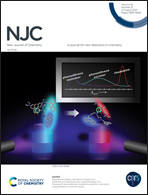N,P co-doped microporous carbon as a metal-free catalyst for the selective oxidation of alcohols by air in water†
Abstract
The selective oxidation of alcohols is traditionally catalyzed by precious metals, where high cost, low selectivity, poor stability, and environmental concerns have hindered their wide application. Here we report a nitrogen and phosphorus co-doped microporous carbon (NPMC) as an efficient catalyst towards the selective oxidation of benzyl alcohol. NPMC is fabricated from one-step pyrolysis of an aerogel derived from the polymerization of p-phenylenediamine with phytic acid. The optimized NPMC exhibits high efficiency and universality for the selective oxidation of alcohols in an aqueous environment using air as the oxidant, due to its large surface area (∼676 m2 g−1), good hydrophilicity, and suitable microporous structure (1–2 nm), as well as the concerted effects between N and P doping. 50 mg of the catalyst is sufficient for affording almost quantitative amounts of benzyl alcohol oxidized to benzaldehyde without organic solvents and co-catalysts, and its catalytic performance is the best among the metal-free catalysts reported. The heterogeneous catalyst is also perfectly stable, and can be reused several times without significant loss of activity and selectivity.



 Please wait while we load your content...
Please wait while we load your content...